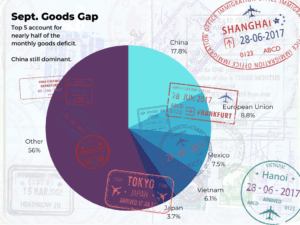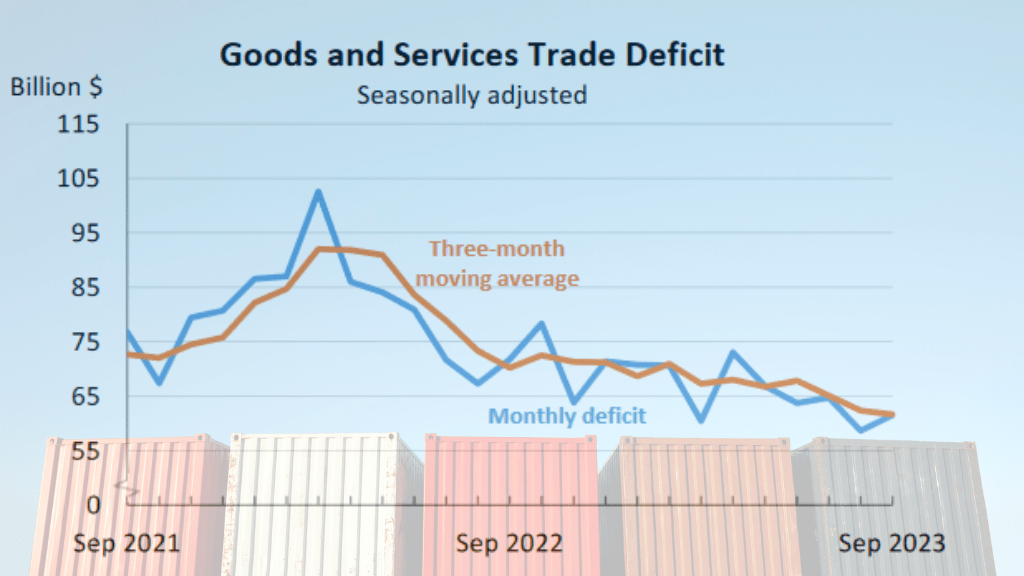The U.S. goods and services trade deficit rose 4.9% in September, and even though the 2023 deficit is set to be smaller than the record 2022 level, the goods deficit will break $1 trillion again this year. If the U.S. manages at least an $80 billion monthly goods deficit over the next three months, which is a conservative estimate, then the U.S. goods trade deficit will come in at $1.039 trillion.
All told, the goods and services deficit for the month of September was $61.5 billion, the Bureau of Economic Analysis said on Tuesday. The goods deficit alone was $86.8 billion on a total Census basis. Services include exports of intellectual property, financial services, business consulting, and travel services.
Trade Deficits With Other Nations
Asia accounts for about half of the goods deficit, with China, the EU, and Mexico being the top three sources of the trillion-dollar trade gap. The September goods deficit with China came in at $28.4 billion, a full $10 billion less than the year-ago September figure. This is the result of a number of factors, including the impact of the China tariffs, the rush to “de-risk” in the corporate sector by shifting production away from China, and an easing in U.S. consumer purchases of electronics this year.
The deficit with Japan increased by $1.9 billion over the year-ago September figure to $6.9 billion in September this year, while the deficit with Vietnam keeps exploding, rising by $1.5 billion to $9.4 billion.

Trade deficit figures are still heavily centered on China.
Top Traded Goods
The top five traded goods do not differ from month to month, with rare exceptions. Once again, the top exports for the U.S. for the month of September were pharmaceuticals ($8.57 billion), industrial machinery ($8.52 billion), auto parts ($5.53 billion), passenger vehicles ($5.50 billion) and semiconductors ($5.1 billion).
Imports are similar, with little changes and with transnational trade in most of these top items. Our leading imported goods for the month were also the leading source of our trade deficit, stemming from passenger vehicles ($18.67 billion), pharmaceuticals ($17.46 billion imported), auto parts ($12.29 billion), cell phones ($10.82 billion) and industrial machinery ($6.61 billion).
On a January to September basis, our trade deficit in autos, parts, and engines was $205 billion, significantly worse than last year’s $178 billion. Our trade balance in pharmaceutical preparations was $73 billion in this year’s first nine months, up from $70 billion in the year-ago period.
“The overvalued dollar, continued offshoring in some sectors, combined with China’s determination to subsidize targeted industries, like driving down prices in renewable energy equipment for example, continue to make the U.S. the world leader in trade deficits,” commented CPA chief economist Jeff Ferry.
Congress Can Fix the Dangerous Dependence on Imported Pharmaceuticals












